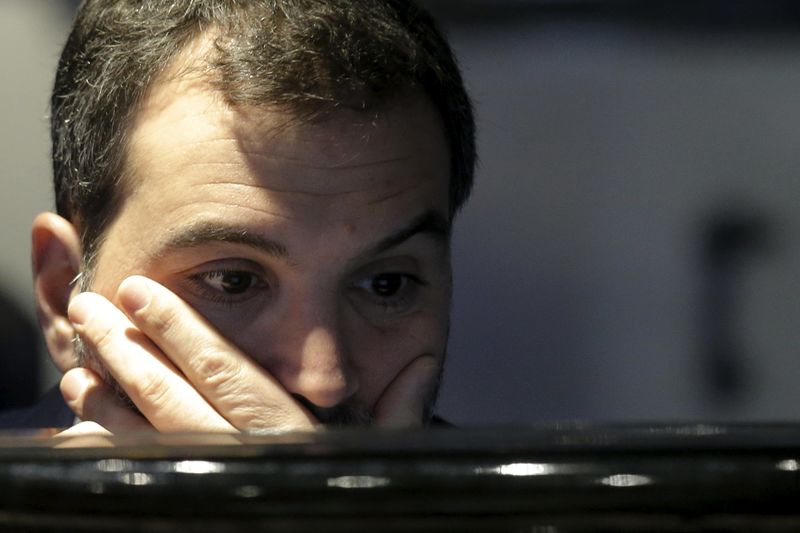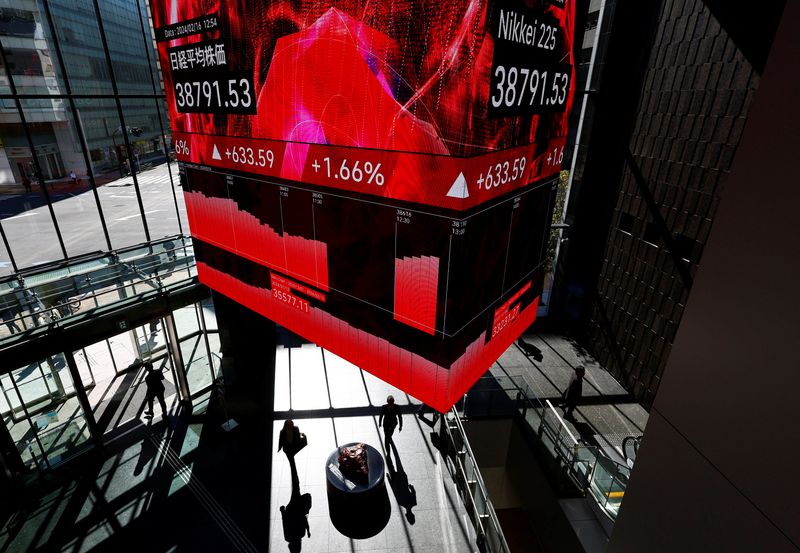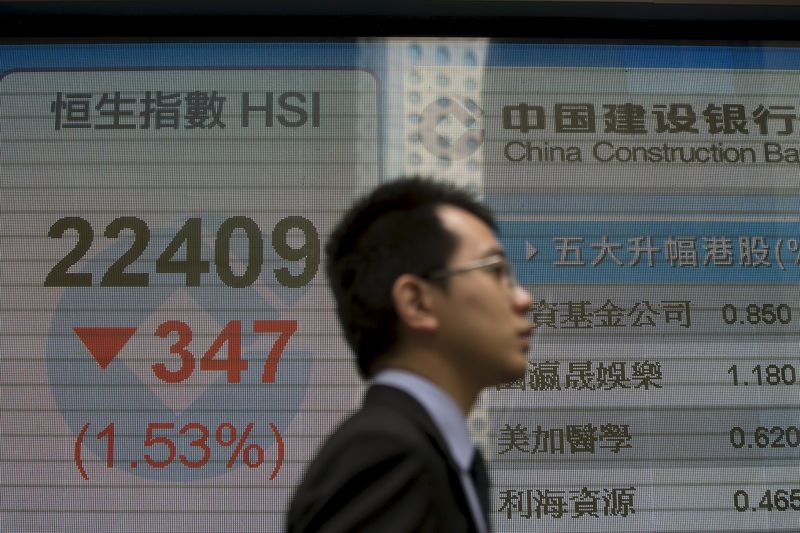Earnings call: Dynex Capital raises dividend amid positive Q3 results

Dynex Capital, Inc. (NYSE: NYSE:DX) reported solid financial results for the third quarter of 2024, with a notable 7% economic return and a 6.5% return year-to-date. During the earnings call on October 21, 2024, the company announced a 15% increase in its common dividend, raising it from $0.13 to $0.15 per share.
Executives highlighted a favorable investment environment due to declining funding costs and a steeper yield curve, which they believe supports opportunities for positive carry and increased earnings. The company also emphasized its strategic plans to leverage capital to enhance returns and its robust investment strategy in mortgage-backed securities (MBS).
Key Takeaways
- Dynex Capital reported a 7% economic return for the quarter and a 6.5% year-to-date return.
- The common dividend was increased by 15%, from $0.13 to $0.15 per share.
- Executives noted a favorable investment environment with declining funding costs and a steeper yield curve.
- The company raised $56 million in new capital and reported a book value of $13 per share.
- Management remains optimistic about the company’s performance in 2025 and beyond, with a focus on navigating near-term event risks.
Company Outlook
- Management is optimistic about 2025, focusing on navigating near-term event risks, especially surrounding the upcoming election.
- The company is prepared for potential rate movements and prepayment risks.
- Executives anticipate a terminal Fed funds rate between 3% and 4% and mortgage rates ranging from 5% to 7%.
- The firm is strategically preparing for potential market volatility surrounding the November 5 election by locking in forward financing costs.
Bearish Highlights
- Expenses rose mainly due to performance-based compensation.
- Realized hedge losses could potentially lower distribution requirements, although cumulative benefits remain strong.
Bullish Highlights
- The investment environment is favorable for positive carry and increased earnings.
- Interest income improved with the addition of higher-yielding assets to the portfolio.
- The company has successfully grown its capital base since 2020 and plans to continue capital raising efforts.
Misses
- There was a slight decrease in leverage due to increased book values.
Q&A Highlights
- Management discussed the less restrictive stance of the Federal Reserve and its influence on market expectations for rate cuts.
- The portfolio is expected to perform well in steep yield curve scenarios.
- The company is confident in raising its dividend and achieving returns exceeding the dividend yield.
- The ATM program will be the primary method for capital raising, with openness to larger block trades if priced attractively.
Dynex Capital’s management team, including Byron Boston and Smriti Popenoe, have expressed confidence in their ability to navigate the evolving market landscape and deliver value to shareholders. The company’s strategic approach to leveraging capital and effective hedging, despite rising rates, has contributed to an increase in book value and confidence in future returns. With a disciplined capital-raising strategy and a focus on macroeconomic factors, Dynex Capital maintains a positive outlook for future investments and capital deployment, as reflected in their raised dividend and solid third-quarter performance.
InvestingPro Insights
Dynex Capital’s recent financial performance and strategic decisions align with several key metrics and insights from InvestingPro. The company’s 15% dividend increase is supported by InvestingPro data, which shows a significant dividend yield of 12.35% as of the most recent data. This high yield is particularly noteworthy given that Dynex Capital has maintained dividend payments for 17 consecutive years, as highlighted by one of the InvestingPro Tips.
The company’s optimistic outlook for 2025 and beyond is reflected in its market performance. InvestingPro data reveals a strong 1-year price total return of 34.78%, indicating investor confidence in Dynex Capital’s strategy and execution. This positive trend is further supported by the company trading at 95.58% of its 52-week high, suggesting sustained momentum.
However, investors should note that Dynex Capital is trading at a high earnings multiple, with a P/E ratio of 138.9. This valuation metric might be a point of consideration for value-oriented investors, especially in light of the company’s recent capital raising activities and strategic investments in MBS.
For those interested in a deeper analysis, InvestingPro offers additional tips and insights that could provide valuable context to Dynex Capital’s financial position and future prospects. InvestingPro has 8 more tips available for Dynex Capital, which could offer further clarity on the company’s financial health and market position.
Full transcript – Dynex Capital Inc (DX) Q3 2024:
Operator: Ladies and gentlemen, good morning and thank you for standing by. My name is Abby and I will be your conference operator today. At this time, I would like to welcome everyone to the Dynex Capital Third Quarter 2024 Earnings Conference Call. All lines have been placed on mute to prevent any background noise. After the speaker’s remarks, there will be a question-and-answer session. [Operator Instructions] Thank you. And I would now like to turn the conference over to Alison Griffin, Vice President of Investor Relations. You may begin.
Alison Griffin: Good morning and thank you for joining us for Dynex Capital’s third quarter 2024 earnings call. The press release associated with today’s call was issued and filed with the SEC this morning, October 21, 2024. You may view the press release on the home page of the Dynex website at dynexcapital.com, as well as on the SEC’s website at sec.gov. Before we begin, we wish to remind you that this conference call may contain forward-looking statements within the meaning of the Private Security Litigation Reform Act of 1995. The words believe, expect, forecast, anticipate, estimate, project, plan, and similar expressions identify forward-looking statements that are inherently subject to risks and uncertainties, some of which cannot be predicted or quantified. The company’s actual results and timing of certain events could differ considerably from those projected and/or contemplated by those forward-looking statements as a result of unforeseen external factors or risks. For additional information on these factors or risks, please refer to our disclosure filed with the SEC, which may be found on the Dynex website under Investor Center, as well as on the SEC’s website. This conference call is being broadcast live over the Internet with a streaming slide presentation, which can be found through a webcast link on the home page of our website. The slide presentation may also be referenced under quarterly reports on the Investor Center page. Joining me on the call today are Byron Boston, Chairman and Co-Chief Executive Officer; Smriti Popenoe, Co-Chief Executive Officer, President and Chief Investment Officer; Rob Colligan, Chief Financial Officer and Chief Operating Officer, and T.J. Connelly, Senior Vice President, Strategy and Research. It is now my pleasure to turn the call over to Byron.
Byron Boston: Thank you, Alison. Good morning and thank you for joining us today. Our economic return of 7% for the quarter continues to highlight the skills and experience necessary to navigate the current environment. We firmly believe that we can deliver value to our shareholders across multiple market scenarios. As a sign of our confidence, the board has voted to increase the common dividend by $0.02 per share per month. This represents a 15% dividend increase from $0.13 to $0.15 per share. This decade, we have been strategically focused on our investment strategy and capital allocation, simplifying and enhancing our capital structure. We embarked on a strategy to grow the company to drive operating leverage and to improve our common stocks’ liquidity while balancing our equity capital. Our highest priorities are to be reliable stewards of capital, transparent in our actions, and good corporate citizens. Dynex is a strong, diverse organization building on a 30-year vision to create a multi-generational organization that can stand the test of time. As Smriti will elaborate in her comments, this remains a very favorable return environment, with funding costs declining and the curves steeper. She and the team are prepared with flexibility and liquidity. Both are essential for today’s global environment. I’ll now turn it over to Smriti.
Smriti Popenoe: Thank you, Byron. From a macro perspective, we are moving into a regime with a less restricted Fed, which brings with it the opportunity to earn positive carry from the yield curve. This is a powerful source of forward returns. Overall, we are positioned to deliver solid results, creating value in four main ways: managing the existing portfolio; optimizing our capital structure; raising equity and investing capital at accretive ROEs. The broader investment environment remains favorable with mortgage spread still near historic-wise. The yield curve shows forward financing costs declining well into 2025. While being mindful of risks, we are investing capital at marginal returns in the mid to high-teens ROE. We’re also entering this period with solid performance, 7% total economic return for the quarter and 6.5% year-to-date. While we remain highly alert and prepared for near-term event risk from the U.S. Elections and broader geopolitical developments. In the medium term, we see tremendous upside earnings power on the balance sheet from the ability to take leverage up and the ability to earn additional drop income. A one-time increase in leverage invested at 12% adds $0.19 per share per year in economic return. We think we have the room to take our total leverage up 1 times to 2 times from today’s levels and aim to do so opportunistically, as always, within the context of the global macro risk environment. Secondly, drop income, as you know, is a key feature of investing in TVAs. Drop has two components, the return on the assets, which is a function of prepayments, and the implied financing cost, which is driven by supply and demand. In a steep yield curve environment, prepayments usually slow, the asset yield rises, and therefore drop income also rises. When demand is heavy for MBS as it can be when the curve is steep, implied financing cost decline also increasing the drop. This is called specialness. So at any given moment the drop is a function of these two factors, which are quite independent of each other, and we anticipate both to be favorable, higher sustained asset yields and some degree of specialness returning to dollar-roll markets as financing costs decline. Dynex is uniquely positioned to capitalize on these opportunities and the team relies heavily on our deep experience in managing the embedded risk in mortgage backed securities. We leaned on our tactical expertise to adjust our portfolio through the major market moves this quarter. Speaking of deep expertise, I am delighted to introduce my colleague T.J. Connelly, our Senior Vice President of Strategy and Research, who joined us just over a year ago. He brings over 2.5 decades of experience at hedge funds and asset managers. With his deep background in research and investing, T.J. brings a disciplined process enhanced by his knowledge of the latest data science and AI methods. Some of you may have already met T.J. as he has been active in talking to our institutional investors over the last year. And I will now turn it over to him to discuss elements of our investment strategy.
T.J. Connelly: Thank you, Smriti. It’s a pleasure to be here. The investment team at Dynex is one of the strongest, not only in the REIT industry, but across the asset management industry. I’m excited to continue to enhance the team’s discipline and transparent investment process. The process is built for a multitude of environments. Today, markets are shifting into a powerful new financial regime with a steeper yield curve and improved financing rates for mortgages. Economic growth remains modest to moderate, inflation is manageable, and monetary policy appears likely to be less restrictive. This has historically been a recipe for robust mortgage performance. As Smriti mentioned, in this kind of environment, the market for newly issued to be announced mortgages, TBAs, has historically enjoyed a strong technical bid. We have already started to see signs of this. Drop income available in coupons like 4s and 4.5s for instance, jumped sharply in the third quarter amid stronger bank demand. Additionally, there was an uptick in demand for collateralized mortgage obligations, CMOs, as investors sought floating rate bonds backed by agency RMBS. As we expected, mortgage demand was dispersed across the agency mortgage coupon stat. Lower coupons performed particularly well, while higher coupons lagged. Overall, in the quarter, option-adjusted spreads were anywhere from 10 basis points to 15 basis points tighter on lower coupons to as much as 10 wider on TBA 6s and higher. In the last two quarters, the team shifted the portfolio towards specified pools, especially in higher coupons, and this contributed to our strong total return in the third quarter. Repayments rose sharply for some of the most re-financeable mortgages as the average 30-year primary mortgage rate hit 6%. Repayment protection from lower loan balances and other specified characteristics mitigated the impact of faster speed. Specified pools generated solid cash flows and positive alpha with higher payups relative to TBAs. The team here at Dynex expects that bank and CMO demand will grow in the coming quarters. Specified pools as a share of our total agency RMBS portfolio enters the quarter at a local high. As pricing has evolved and the potential for stronger drop income in TBA develops, we will continue to consider the optimal mix of pools versus TBAs as we seek to generate alpha for the portfolio. We expect financing costs to continue declining as the Fed delivers more rate cuts. As we often see during transitions to a new regime though, financing markets have experienced some volatility on the way to a new equilibrium. The Fed’s quantitative tightening program and regulatory capital constraints have put upward pressure on mortgage repo rates relative to SOFR, especially at quarter end. We’re planning for more periodic rate pressure in repo markets ahead. We started to adjust our hedge book in the third quarter, shifting to SOFR swaps from treasury futures. For several years now, treasury hedges have been the best choice for managing interest rate duration, because we were effectively selling the asset that was being created the most. The government has been financing massive fiscal deficits. As you can see from slide 14 in our earnings deck, the spread between long-term treasury and SOFR rates is historically wide. Seven-year SOFR swap rates are 40 bps below the seven-year treasury yield. You can also see on that slide that the spread has historically moved with the level of federal deficits. At today’s spread levels, we think lowering the fixed rate yield on our hedges by 40 basis points offers highly accretive ROE for the incremental capital required for swaps versus futures. In our view, the spread now compensates us for the risks of the potential further increase in federal deficits over the long-term. Overall, we expect the environment will be favorable for both the asset and hedge sides of our portfolio. The opportunities to earn carry and roll down with a steeper curve are significant and growing. We expect to be able to generate alpha within agency RMBS from dollar rolls and relative value. More compelling yields on our hedges will also gradually allow a greater mix of assets across the spectrum of residential and commercial mortgages to generate robust and resilient long-term returns to support our dividends. I’d like to now turn it over to Rob for more details on the quarter.
Rob Colligan: Thank you, T.J., and good morning to everyone joining the call. Book value ended the quarter at $13 per share, and the economic return was 7% for the quarter. Leverage was down slightly from the second quarter, primarily driven by the increase in our book values. The 10-year treasury was down approximately 60 basis points from the end of the second quarter, and mortgage spreads were broadly tighter this quarter. We raised $56 million of new capital, and we continue to keep ample levels of liquidity to deploy if spreads widen or volatility increases between now and the end of the year. Interest income was up from the second quarter from the active addition of higher-yielding assets into the portfolio, while older, lower-yielding assets continue to pay down. Borrowing rates on repurchase agreements are beginning to trend down as a result of the Fed’s first interest rate cut in September. This is the first cut following the interest rate hiking cycle that started back in March of 2022. And as T.J. mentioned, our hedge book now includes both swaps and treasury futures. And as I’ve mentioned on previous quarter’s calls, hedge gains and losses on futures are a component of re-taxable income and will be part of our distribution requirement with other ordinary gains and losses over time. This quarter, we realized hedge losses, which will reduce our distribution requirements, compared to our disclosed numbers at the end of the second quarter, yet we still have a large cumulative benefit for our portfolio. As a reminder, periodic swap income will be reported as earned each quarter with projected cash flows reported on a mark-to-market basis. You can see some details on this on page six in the earnings release, page 11 of the earnings presentation, as well as the EAD reconciliation for the periodic swap benefit. Expenses for the third quarter were up, primarily related to performance-based compensation, and the solid financial returns delivered this quarter. With that, I’ll now turn the call back over to Smriti for closing comments.
Smriti Popenoe: Thank you, Rob. Our team has always operated with great integrity and unwavering commitment to our values and a focus on supporting our community. We continue to operate with these tenants at the center of our activities. We live and bleed these elements in our daily work and believe this is a distinguishing factor for our company. This is reflected in our long-term industry-leading performance as shown on page seven in the investor presentation. Dynex shares offer compelling value at today’s levels and we believe over time they will command the premium valuation that is warranted for the ethically managed high quality investment product we deliver. Our management team, Board of Directors, and the Dynex team are all personally committed to investing alongside our shareholders. We’re optimistic about our future and our prospects for 2025 and beyond. With that, operator, I’d like to open the call to questions.
Operator: Thank you. And we will now begin the question-and-answer session. [Operator Instructions] And your first question comes from the line of Bose George with KBW. Your line is open.
Bose George: Hey everyone, good morning. Can I just get an update on mark-to-market book value?
Smriti Popenoe: Mark-to-market book value is down about a percent since quarter-end.
Bose George: Okay, great. Thanks. And then you gave the sensitivity to the increased leverage, so that 1 turn of $0.19 cents. In terms of taking up the leverage, what kind of factors are you focused on in terms of that potentially happening at some point?
Smriti Popenoe: Yes, I think one of the biggest things is just near-term event risk, getting through the election season and any kind of near-term market volatility, Bose. The macro environment in general is probably the first consideration. And then just near-term event risk. Once we’re through that, I think we can really be more confident about sort of the long-term impacts of taking that leverage up. Other factors, you know, the marginal ROE, the level of spreads, where they are at the range, all of that, just economic considerations obviously will be there as well.
Bose George: Okay, great. Thanks. And then just in terms of the switch of some of the hedges to swaps from treasuries. From the NIM standpoint, the piece that you’re switching, does that incrementally get that sort of that 40 basis point differential between the treasury spread versus the swap spread?
Smriti Popenoe: It does. And I think one of the most important concepts here is, and when we say, you know, financing costs are favorable, financing costs are declining, it’s important to know the distinction between sort of what the Fed is doing on the very front end and what the market pricing, right? So the Fed doesn’t actually have to cut for our financing costs to come down. The market just has to price those cuts and we have to lock that in. And that’s exactly what we’ve been doing by switching into swaps. So when we do this transition out of futures into swaps, we’re doing two things. One, is we’re effectively earning that extra 40 basis points, but two, we’re also locking in forward financing costs opportunistically. And that’s what takes sort of the idea that, you know, does the Fed have to cut, not necessarily if we’ve already locked that in with [Technical Difficulty] over time. So I think that’s a big piece. And quite frankly, that and a bunch of other positive things that we’ve been saying about the environment is what has led us to raise the dividend.
Bose George: Okay. Okay, great. Thank you.
Operator: And your next question comes from the line of Eric Hagen with BTIG. Your line is open.
Eric Hagen: Hey, thanks. Good morning. Great quarter. Hey, so if we saw prepayment speeds pick up a little bit more meaningfully, especially in the higher coupon stuff. I mean, how do you think that would — maybe change your approach to leverage or the structure of hedging? And then the second part of that question, I mean, is the objective to basically reinvest most of the paydowns into the current coupon? Or do you feel like there are scenarios where you can maybe deviate from that and be opportunistic within the coupon stack? Thank you guys.
Smriti Popenoe: Yes, hi, Eric. Thank you. I think, you know, I’ll just give you a broader sense for pre-payments and the impact. One of the most unique things about this environment is that we have nine or 10 different coupons into which we can invest, right? So the relative value opportunities, even if the payments are rising in the higher coupons, are ample. I’ll let T.J. jump in here and just give you our thoughts on, you know, what our thoughts are on different aspects of the coupon stack.
T.J. Connelly: Yes, Eric, the, you know, higher coupons, as you mentioned, did prepay a bit faster. The actual prepayment experience for our portfolio was quite muted, given the specified pool holdings that we’ve had. So there’s a lot of different opportunities in this environment, given where specified pools are trading now relative to TBA, so that’s one consideration. And then the final comment in my prepared remarks, I’d add that, you know, as far as the reinvestment opportunities, the coupon stack is very big as Smriti mentioned. And there’s also a lot going on, on the agency CMBS side and other parts of the mortgage capital structure that are very increasingly interesting for us as well.
Eric Hagen: Yes, great stuff. Hey, so do you guys have any perspectives on the volatility that we saw in the repo market at the end of the quarter here? And the ability for mortgage repo rates to track with Fed funds going forward and how you envision that?
Smriti Popenoe: Absolutely, yes. I think one of the things that we’ve been very focused on has been just the evolution of financing markets as the Fed does QT. And I would think about it in two different components here, Eric. One is that every quarter end, there’s sort of a traffic jam that is happening in balance sheets where everyone’s trying to go someplace and there’s a jam that happens and we call this more of an intermediation effect and that’s causing locally repo rates to spike especially at month end and quarter ends. And that’s not a function of the availability of money. It’s just a function of just the pipes not being clear. And that’s happening because of capital rules and such, right? So that really affects people who are funding on an overnight basis, you will be more exposed to having a funding spike at month end or quarter end. And then there’s a second piece of this, which is more structural, where we are tracking, what is the level of reserves in the system? The actual amount of liquidity that’s available in the system, that is declining as the Fed is continuing quantitative tightening. And I think of that more as, you know, just like how big the highway is. So every quarter-end, you’ve had a traffic jam, that’s affecting the price at which you can borrow money, and if you’re funding on an overnight basis, that’s affecting you. And then, overall, there’s just been the size of the highway is starting to shrink as QT continues. And so, these are kind of the two different pieces. So far, we’ve really not seen a detrimental impact to the availability of repo financing, especially for agencies. It’s just been the price and it’s been locally spiking. And otherwise, the market seems healthy and T.J., do you have any other details to offer here?
T.J. Connelly: I think that you’ve highlighted the important things. One thing I would add is that the Federal Reserve is monitoring these markets more closely than ever. They have a new bank survey of reserve levels that they’re publishing each week. In fact, the latest one came out on Friday. So the Fed is monitoring these conditions. It is about availability versus the intermediation factors that Smriti has commented on. So availability and then the distribution of that liquidity is the key. It’s the distribution of that liquidity that has been creating these traffic jams.
Eric Hagen: Yes. I appreciate you guys. Thank you.
Smriti Popenoe: Thanks, Eric.
Operator: And your next question comes from the line of Trevor Cranston with Citizens JMP. Your line is open.
Trevor Cranston: Hey, thanks. Good morning.
Smriti Popenoe: How are you, Trevor?
Trevor Cranston: Good. Hey, can you guys talk a little bit about how you’re thinking about the rates market and the potential for movement in rates as we head into the election and sort of how you think about the overall risk positioning of the portfolio over the next couple of months hitting into that? Thanks.
Smriti Popenoe: Absolutely. Yes, thank you. Thank you for the question. So, overall, I’ll just give you the broad comments and I can ask T.J. to cover the detail. But really at this point, right, we’re looking at a Fed that is decidedly less restrictive and that’s just sort of a psychological fact of the Fed, right? And then once you’ve got the best restrictive Fed, the markets have done an incredible job of either pricing in, you know, anywhere from six to eight cuts, and now we’re back to sort of like, you know, four to six cuts. That’s been the general direction in which the markets have been going. So you’re looking at a terminal Fed funds rate somewhere between 3% and 4%, all right? And so our portfolio and the way we’ve thought about the world coming up has been in the context of 3% to 4% terminal funds rate. And then as you know, right, like we look at this and say, okay, perhaps it’s 3% to 4% and then we’re preparing for any sort of exogenous shocks outside of that range. So that’s generally the premise under which we construct, you know, our view on rates going forward. And then the second piece of that is with rates, you know, if the terminal rates between 3% and 4%, where does the mortgage rate end up, right? And that we see somewhere between, call it 5% and 7%. That gives you a sense of sort of the opportunity to earn, carry, if you will, in that environment. It gives you a sense of prepayment risk that you’re going to suffer in that environment. And let’s just be honest here, like a lot of the mortgage market is priced well below 5%, right? So the amount of prepayment risk is actually quite limited to just the newly produced mortgages that have been out there in the last two years. So that actually creates a different set of opportunity in and itself. And then if you look at our comments, right, like we are basically not saying rates are going to be at this level or rates are going to be at that level. We focus a fair amount on the shape of the yield curve. And I would say even within that construct, we’re actually focused on how less inverted the curve is versus how steep it is per se, right? So if you go back and look in the last three quarters, the amount of disinversion that has happened in the yield curve is massive. And then the second piece that we’ve been looking at very actively, and you’ll see this in terms of how we’ve restructured our futures versus swaps, is when the market is offering forward financing costs at attractive levels, we are locking those in, right? So those are some ways tactically we’ve been thinking about the level of rates as well. T.J., if there’s anything you want to add on that?
T.J. Connelly: I would just dig into the tactical side there, Trevor, a little bit. As we’re coming into one of the biggest known unknowns we’ve had in the marketplace in a long time with the November 5 election, our process is heavily dependent on what’s happening in the Swaptions market. And what we’re seeing there is the market is pricing forward volatility to be significantly higher for about very high for about five days following the election and significantly higher than historic averages for about a month. So we are very much prepared for that and the kind of liquidity that we’re carrying. And as Smriti mentioned, we have capacity to add to leverage and take advantage of those opportunities that may come about from [this] (ph) locations in the market that we think will be happening over the course of November and probably into December as well.
Trevor Cranston: Got it. Okay, that’s very helpful. Thank you.
Operator: And your next question comes from the line of Jason Weaver with Jones Trading. Your line is open.
Jason Weaver: Hi. Good morning. Congrats on the quarter.
Smriti Popenoe: Hi, Jason.
Jason Weaver: Maybe just some nuance on the prior question there. I think with the prior consensus seeming to be more of a moderation of yields across the curve and seeing what we’ve seen since the Fed, you know, cut just recently? What would you expect the difference in portfolio performance to be under a more of a bull steepening scenario like we’re seeing today with the long-end board entered here at higher rates?
Smriti Popenoe: Yes, I mean we actually give out our portfolio profile very clearly in both the steepening scenarios, as well as flattening scenarios. There’s actually a slide in the earnings deck where that performance is laid out, slide 24. Our portfolio performs well in steep yield curve scenarios, right? It’s sort of agnostic in terms of the level of rates. When we did approach sort of the [$2.75] (ph) terminal funds rate, our team felt like that was actually very attractive in terms of locking in financing costs, and we’ve been doing that. And you can see that as part of the September 30 interest rate risk profile. So, we felt those were good rates to lock in. And in general, right, our portfolio benefits from steep yield curve environments I would say. The mortgage market in general benefits from steep yield curve environments, because of the opportunity to earn carry.
Jason Weaver: Got it. That’s very helpful. Thank you.
Operator: [Operator Instructions] And your next question comes from the line of Doug Harter with UBS. Your line is open.
Doug Harter: Thanks. Hoping we could talk a little bit about capital raising decisions and the dividend increase. In the past, you’ve referenced, kind of, the dividend yield as your cost of capital in making this capital raising decisions? And I guess all else being equal the dividend increase would raise that cost of capital by about 200 basis points. So just curious how you’re thinking about capital raises going forward?
Smriti Popenoe: Absolutely. Yes, Doug, thank you for the question. Look, we have been consistently messaging a number of different things. One, is this is a very good investment environment, and we feel really good about just the ability to generate returns in excess of the level of the dividend. We’ve been talking about that for four to six quarters now. We’ve also talked about the ability to invest capital on the margin, accretively relative to our cost of capital. That has been the foundation for capital raising. We’ve been talking about how wide MBS spreads are. They’re still historically wide. We’ve talked about how we’ve been able to hedge the book, while rates have been rising and now we’re looking at transitioning to locking in these lower financing costs, right? So all of these things have collectively set us up, including basically our raising of the capital, investing that capital at wider spreads, and writing that the spread tightening in, you can see that is showing up in our book value. All of these actions have set us up to be more confident about forward returns. And that’s really the basis for raising the dividend. So our ability to generate those forward total economic returns is what we feel is the right thought process here, and that’s what’s caused us to raise the dividend. In terms of capital raising, at this point, nothing’s changed for us, right? Our discipline is still there. We’re still looking at the macro. We’re still going to be looking at the cost of capital. We’re still going to be looking at the ability to invest that capital accretively over time. And one thing you’ve heard me say now for several quarters is that marginal returns in the agency MBS space are very powerful. If you look at the coupon stack today, you are getting, you know, in some cases, before hedging out option costs in the 20% ROE range. And then once you take out option costs and things like that, you’re still getting high-teens returns. So when we’re able to invest in that kind of a creative manner, it’s a positive sign. And I don’t think this detracts in any way from our ability to continue to raise and deploy money in the future.
Doug Harter: Great. And as you’ve been raising, you’ve used both the ATM and you’ve used larger block trades? When you think about the environment, which kind of what form of capital raising do you think it’s kind of likely to be most attractive, you know, if these opportunities continue to persist?
Smriti Popenoe: You know, go ahead, Rob.
Rob Colligan: Yes, sure Doug I think the ATM is probably going to be our primary source obviously if we have attractive block size at a reasonable price we would definitely look at that. But also adding to some of the comments, we’re one of the few in our space that have grown our capital base since 2020. It really points to the discipline that we’ve had in our approach and why we’ve been able to attract capital. I do feel like finally our stock price is, when you think about what we reported today, very close to our book value. So there’s no longer this discount. And so raising capital, and I think we should be trading at a premium, right? That’s just my view of the world, but there shouldn’t be this negative stigma that we’re raising capital and it’s a detraction to book value at all or there’s a discount that we’re achieving. I think we should continue to be at or above book value. And so we’ll be raising capital, investing at a good time, and actually also helping our scale and size over time. So all those things should be compelling for, not only for us, but for our investors.
Doug Harter: Great, thank you both.
Smriti Popenoe: Thanks, Doug.
Operator: And that concludes our question-and-answer session, as well as concluding today’s conference call. We thank you for your participation and you may now disconnect.
This article was generated with the support of AI and reviewed by an editor. For more information see our T&C.







